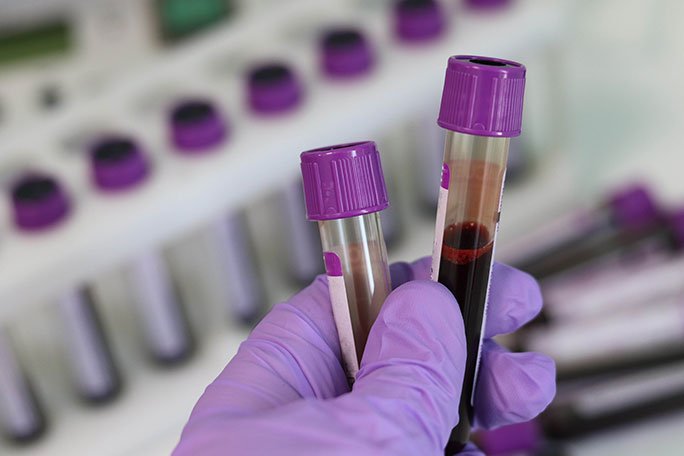Challenges in Implementing IoT Devices for Real-Time Monitoring in Hospitals
Summary
- Hospitals in the United States are facing challenges in the implementation of IoT devices for real-time monitoring of equipment.
- Issues such as data security, interoperability, and integration with existing systems are hurdles hospitals must overcome.
- Despite challenges, the adoption of IoT devices offers great potential for improving patient outcomes and operational efficiency in healthcare facilities.
Hospital Supply and Equipment Management: Challenges in Implementing IoT Devices for Real-Time Monitoring
Introduction
In recent years, the Internet of Things (IoT) has revolutionized various industries, including healthcare. Hospitals are increasingly turning to IoT devices for real-time monitoring of equipment to improve efficiency, reduce costs, and enhance patient care. However, the implementation of IoT devices in healthcare facilities comes with its own set of challenges. This article will explore the challenges hospitals in the United States are facing in the adoption of IoT devices for equipment monitoring.
Data Security Concerns
One of the primary challenges hospitals encounter when implementing IoT devices for equipment monitoring is data security. With the proliferation of connected devices, there is an increased risk of data breaches and cyberattacks. Hospitals must ensure that the data collected by IoT devices is secure and protected from unauthorized access. This includes encryption of data, secure network connections, and robust authentication mechanisms.
Interoperability Issues
Another significant challenge in the implementation of IoT devices for equipment monitoring is interoperability. Hospitals often have a variety of equipment from different manufacturers, each with its own proprietary technology and data protocols. Integrating IoT devices with existing systems and equipment can be a complex and time-consuming process. Healthcare facilities must ensure that IoT devices can communicate seamlessly with their existing infrastructure to extract and share data effectively.
Integration with Existing Systems
Moreover, integrating IoT devices for equipment monitoring with existing systems poses a challenge for hospitals. Healthcare facilities typically have multiple systems for managing inventory, Supply Chain, and patient data. Ensuring that IoT devices can integrate with these systems and provide real-time data insights requires careful planning and coordination. Hospitals must invest in robust integration solutions to streamline the flow of data and information across different platforms.
Regulatory Compliance
Compliance with regulatory requirements is another obstacle hospitals face in implementing IoT devices for equipment monitoring. Healthcare facilities must adhere to various Regulations governing data privacy, security, and Patient Confidentiality. Failure to comply with these Regulations can result in severe penalties and legal consequences. Hospitals must ensure that their use of IoT devices complies with industry standards and Regulations to mitigate risks and safeguard patient data.
Staff Training and Education
Training and educating staff on the use of IoT devices for equipment monitoring is essential yet challenging for hospitals. Healthcare professionals may lack the necessary skills and knowledge to effectively utilize IoT devices and interpret the data they provide. Hospitals must invest in ongoing training programs to ensure that staff are proficient in using IoT devices and leveraging the data insights they generate. Proper training can help maximize the benefits of IoT devices and improve overall operational efficiency in healthcare facilities.
Cost Considerations
Cost is a significant factor that hospitals must consider when implementing IoT devices for equipment monitoring. The upfront costs associated with purchasing and deploying IoT devices, as well as ongoing maintenance and support, can be substantial. Healthcare facilities must carefully evaluate the return on investment of IoT devices and weigh the costs against the benefits they offer. Hospitals may need to allocate budget resources strategically to fund the implementation of IoT devices and ensure long-term sustainability.
Potential Benefits of IoT Devices in Healthcare
Despite the challenges hospitals face in the implementation of IoT devices for equipment monitoring, the adoption of connected technology offers significant potential benefits for healthcare facilities. IoT devices can provide real-time monitoring of equipment, enabling proactive maintenance and reducing downtime. This can help hospitals optimize the use of their resources, minimize disruptions, and improve patient care. Additionally, IoT devices can generate valuable data insights that can inform decision-making, enhance operational efficiency, and drive innovation in healthcare delivery.
Conclusion
In conclusion, hospitals in the United States are encountering various challenges in the implementation of IoT devices for real-time monitoring of equipment. Issues such as data security, interoperability, integration with existing systems, regulatory compliance, staff training, and cost considerations are hurdles healthcare facilities must overcome. Despite these challenges, the adoption of IoT devices offers great potential for improving patient outcomes and operational efficiency in hospitals. By addressing these challenges proactively and strategically, hospitals can leverage the power of IoT technology to transform healthcare delivery and enhance the quality of care for patients.

Disclaimer: The content provided on this blog is for informational purposes only, reflecting the personal opinions and insights of the author(s) on the topics. The information provided should not be used for diagnosing or treating a health problem or disease, and those seeking personal medical advice should consult with a licensed physician. Always seek the advice of your doctor or other qualified health provider regarding a medical condition. Never disregard professional medical advice or delay in seeking it because of something you have read on this website. If you think you may have a medical emergency, call 911 or go to the nearest emergency room immediately. No physician-patient relationship is created by this web site or its use. No contributors to this web site make any representations, express or implied, with respect to the information provided herein or to its use. While we strive to share accurate and up-to-date information, we cannot guarantee the completeness, reliability, or accuracy of the content. The blog may also include links to external websites and resources for the convenience of our readers. Please note that linking to other sites does not imply endorsement of their content, practices, or services by us. Readers should use their discretion and judgment while exploring any external links and resources mentioned on this blog.
